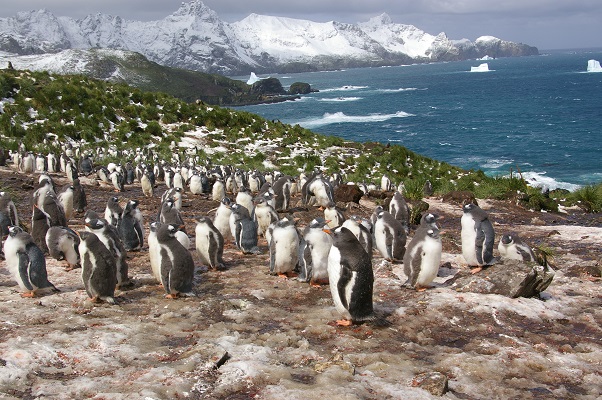Gentoo penguins are benefiting from a newly enlarged no-fishing zone (known as a No-Take Zone NTZ) around the sub-Antarctic island of South Georgia following British Antarctic Survey (BAS) tracking research commissioned by the RSPB.
The remote UK Overseas Territory of South Georgia is home to important colonies of penguins, including the gentoo. Their main diet is krill – a small shrimp-like crustacean – that is abundant in the area.
Recognising the need to balance commercial fishing with habitat and wildlife conservation, in 2012 the Government of South Georgia & the South Sandwich Islands (GSGSSI) established a 1.07million km2 Marine Protected Area. This included a 12 nautical mile NTZ around the South Georgia coast, in which no fishing is allowed. Krill fishing is banned from the remainder of the MPA during the summer seabird breeding season, but opens in the winter when most seabirds migrate away from the island. However, gentoo penguins winter on the island which creates potential for them to overlap with krill fisheries.
In June 2018, a BAS team fitted 16 gentoo penguins with satellite transmitters. The results revealed that the penguins regularly foraged beyond the 12 NM NTZ and overlapped with the krill fishing grounds. This resulted in the NTZ being extended to 30 km, providing an additional 4500km2 of protection.

Describing the research in a new study published in the journal Diversity and Distributions, lead author Dr Norman Ratcliffe, a penguin ecologist at British Antarctic Survey, says:
“Our new study describes how gentoo penguins travel much further from shore than previously thought during years of poor krill abundance. This is a good example of science into policy and I am confident will provide greater protection of their foraging habitat. However, the extension did not encompass the entire penguin foraging area in 2018, so we are exploring approaches to extend the NTZ further during years when krill is scarce. In good krill years when penguins remain closer to shore, the NTZ extent would remain at 30 km. This dynamic ocean management represents a good compromise between conservation and maintaining profitable fisheries.”
Waters around South Georgia are recognised as one of the most biologically rich places on the planet with more described marine species than the Galapagos, and is one of the world’s largest Marine Protected Areas.
Changes in prey fields increase the potential for spatial overlap between gentoo penguins and a krill fishery within a marine protected area is published can he found here
